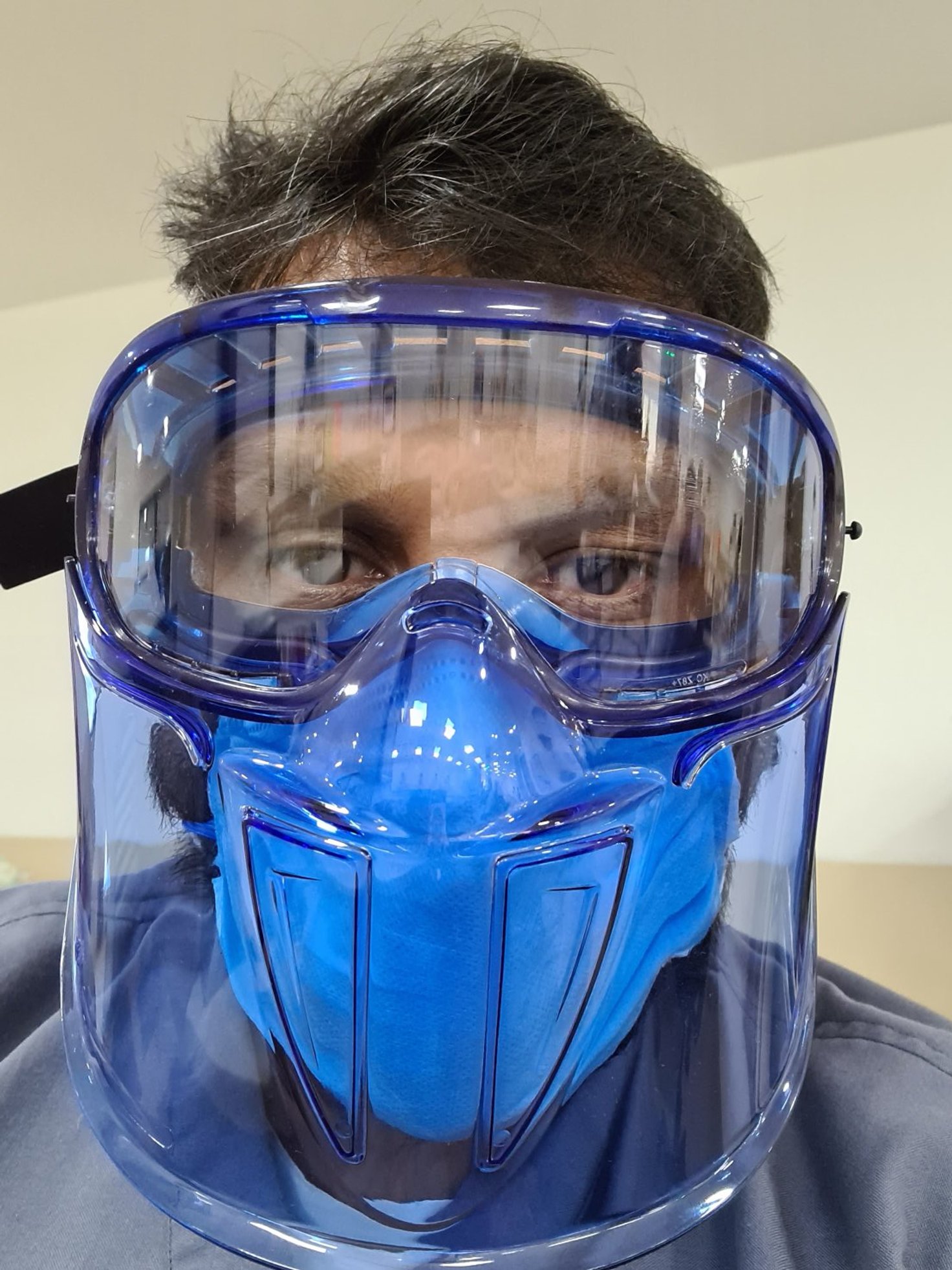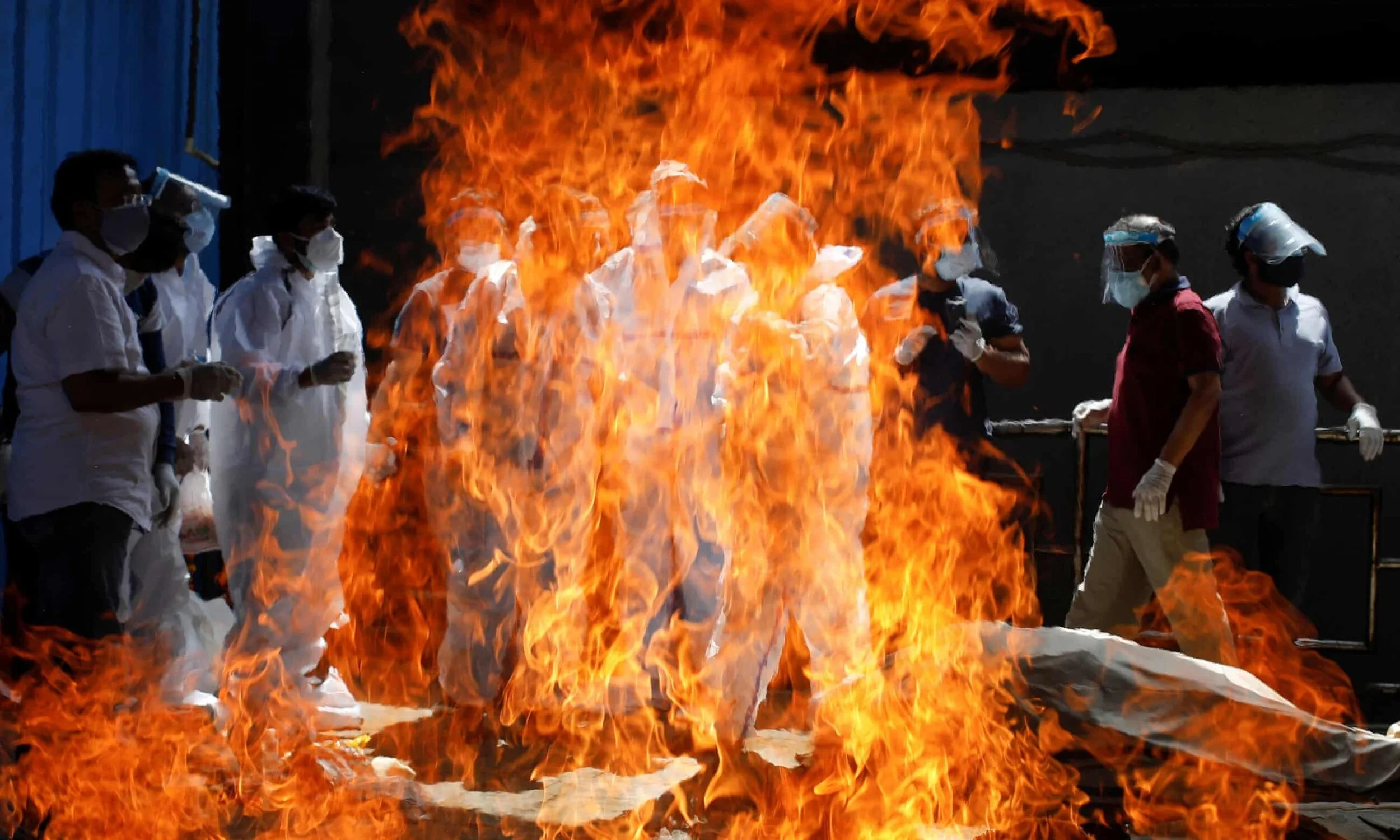Inspiring stories from the COVID Frontlines in India
Introduction
Due to the COVID-19 pandemic, our journey into global health in Summer 2021 was different than any other. As medical students, we were challenged to reimagine the field of global health and find new ways to engage and learn. COVID has brought many inequalities to light, such as inadequate access to healthcare and unequal resource distribution. Learning firsthand from Emergency Medicine doctors in India, witnessing their heroic life saving efforts, and hearing their personal experiences in the fight against COVID has inspired us.
India: The Second Wave
In Spring 2021, headlines describing the desperate situation in India flooded news outlets and social media sites, as COVID-19 infections began to rise at an alarming rate. Despite the increased healthcare infrastructure subsequent to the first wave (such as increased testing, beds, ventilators, drugs, and trained healthcare workers), the rapid increase in new infections during the second wave crippled the healthcare system in many areas of the country.2 Stories quickly emerged of sick patients being turned away, limited oxygen supply not meeting patient demand, and even crematoriums running out of space.3 Healthcare workers struggled alongside their patients, to cope with the challenges that the second surge created. News stories highlighted doctors who were tired, overworked, and physically and emotionally drained as a result of what they were experiencing every day.4,5 However, our system has had longstanding partnerships with Emergency Physicians across India, and while still difficult, the stories shared by many partners reflected amazing resilience, strength, and creativity in the face of this despair and devastation. Speaking to emergency physicians across the country who have been working tirelessly to combat this surge revealed a wide range of perspectives and experiences.
Clinical Perspectives
Dr. Sushant Chhabra is head of the ED at Manipal Hospital in New Delhi. During the first COVID wave, Dr. Chhabra’s hospital did not struggle to manage its cases, but this changed drastically in the second wave. Beds were full, there was a lack of oxygen and ventilators, and physicians had to choose which patients got health care and which did not. Many patients were left without beds and many people had to see their loved ones die because they could not get the support they needed. Dr. Sunil Choudhary, an emergency physician located in Ranchi who helped develop COVID treatment protocols, explained how the protocols brought structure to the moral chaos these decisions can create. Dr. Sujoy Das Thakur, a head emergency physician currently in Kolkata, and former head emergency physician in Raipur, recalled the difficult interactions with patients and their families when he had to turn their loved ones away. Despite these challenges, Dr. Thakur is incredibly proud of the number of lives that he and his colleagues have been able to save. He said that being able to help the most severe patients has been the most rewarding and memorable part of this tragic pandemic.
Systemic Insights
In addition to incredible individual efforts, hospital level adaptations were also crucial to the COVID response. Dr. Chhabra believes that his hospital and ED did a great job during the COVID pandemic, due to the hospital’s COVID response group. The group redesigned the ER to increase its bed capacity, making it possible to care for more people. Similarly, Dr. Sunil Choudhary described how his private hospital in Ranchi (which was not previously authorized to treat COVID patients during the first wave) completely transformed itself to treat COVID patients exclusively in the second wave. Dr. Choudhary also explained how hospital infrastructure changes were crucial for protecting healthcare workers. The infrastructure includes implementing negative pressure ventilation systems and installing glass walls between physician workstations and patient beds so that monitoring, communication, and treatment could be delivered safely.
The development and implementation of telehealth and usage of other innovative medical devices during this surge was also vital to reduce the spread of disease. Dr. Thakur described how in Kolkata the use of video calls and remote monitoring allowed him and his colleagues to help patients with milder cases of COVID in their own homes, referring them to COVID care centers when necessary. Dr. Abdul Rub Hakim Mohammed, another emergency physician, described his experience when his neighbor called him complaining of dizziness and chest discomfort in the middle of the night. Dr. Abdul used a bluetooth, remote EKG device to diagnose an arrhythmia and then took him to multiple hospitals until he found him a bed for treatment. The next morning, the neighbor was undergoing a successful cardiac procedure, made possible by this remote technology.
Personal Life Experiences
The mental health and personal lives of physicians also played an important role during the second wave as physicians overcame the immense hurdles outside their workplace. Many physicians had to move out and quarantine away from their families. Dr. Hakim Mohammed had to live away from his family because he was worried for his mother’s safety. Likewise, Dr. Chhabra sent his family away in fear of catching the virus and infecting them. During these times, Dr. Chhabra, also a runner, stated that he could not run except on Sundays due to the workload he and his colleagues were facing. His runs on Sundays were one thing he was always looking forward to.
Even when physicians decided to stay with their families, it did not mean that life at home was the same as it was before the pandemic. Dr. Thakur explained how he was scared to go home out of fear that he might transmit the virus to his family. He would often sleep alone on the floor. Despite this emotional hardship and a grueling six day work week, Dr. Thakur has not taken a break from work in more than a year and half. He says that even if he could, it would not feel right due to the responsibility and pressure he feels at work. Similarly, Dr. Choudhary works hard to decontaminate himself before he goes home, where he stays in an isolated room, distanced from his family. Dr. Choudhary explained that these experiences and practices are not uncommon. He continues to meet with his hospital’s management to determine how they can best support staff and improve workers’ mental health.
Looking Forward
Since early May, the number of daily new COVID cases in India has decreased. It plateaued at about 40,000.1 However, there is still a fear of a third wave. Some physicians feel a lot can be done to prevent this from happening.
Vaccination is at the biological forefront of preventing this third wave. Unfortunately, perceptions are mixed regarding the vaccine. Dr. Thakur expressed concerns after noticing how many people are hesitant to get vaccinated in Kolkata. According to Dr. Thakur, the vaccine hesitancy is partly due to mistrust, but also a belief that it isn’t necessary because many people had already gotten COVID. This belief was even shared among medical professionals, Dr. Thakur’s colleagues included. Once people started to realize they could get infected more than once, vaccine hesitancy began to decrease. This perspective is in stark contrast to what Dr. Choudhary has seen in Ranchi, where he believes vaccine hesitancy is very low. Dr. Choudhary’s only concern is that villages in the rural areas nearby have not been eager to get vaccinated. However, public health efforts to get village leaders on board has helped address this. Regardless of the mixed views across the country, it is clear that increasing vaccination rates is vital to preventing a third wave from occurring.
Dr. Thakur and Dr. Choudhary also believe that public behaviors will play a key role in preventing further disease transmission. Both physicians emphasized how important simple actions such as handwashing, social distancing, and wearing masks are to halting the spread of COVID. While building out the country’s healthcare infrastructure to address existing issues is important, it is these simple preventative measures that can stop another wave from taking place.
Conclusion
As current medical students, watching doctors around the world battle COVID is inspiring. Throughout our experience interviewing Emergency Physicians, we saw how imperative adaptability is in the field. These doctors were able to creatively integrate evidence based practices, all while keeping up with an evolving pandemic. As medical students, these lessons of persistence, dedication and innovation form cornerstones of our future careers. Whether it is working an extra shift, participating in patient advocacy, or seeing one extra patient, the ER doctors we met made massive differences in people’s lives. They and their work should be recognized. The stories we heard this summer taught us a number of valuable lessons and showed us the very large shoes we must fill as the next generation of physicians.
References
Worldometers.info. 2021. India Coronavirus Cases. [online] Available at: <https://www.worldometers.info/coronavirus/country/india/> [Accessed 31 August 2021].
Jain, V., Iyengar, K., & Vaishya, R. (2021). Differences between First wave and Second wave of COVID-19 in India. Diabetes & Metabolic Syndrome: Clinical Research & Reviews, 15(3), 1047-1048. https://doi.org/10.1016/j.dsx.2021.05.009.
Samarasekera, U. (2021). India grapples with second wave of COVID-19. The Lancet Microbe, 2(6), e238. https://doi.org/10.1016/s2666-5247(21)00123-3.
Constable, P., & Dutta, T. (2021). India’s covid surge has killed more than 500 doctors and sickened hundreds of others since March, stretching staffs thin. The Washington Post. Retrieved 31 August 2021, from https://www.washingtonpost.com/world/asia_pacific/india-coronavirus-health-workers/2021/05/27/a9e31d7c-bd79-11eb-922a-c40c9774bc48_story.html.
Frayer, L. (2021). COVID-19 Has Pushed India's Junior Doctors To Their Limits. Npr.org. Retrieved 31 August 2021, from https://www.npr.org/2021/05/26/1000101619/covid-19-has-pushed-indias-junior-doctors-to-their-limits.










